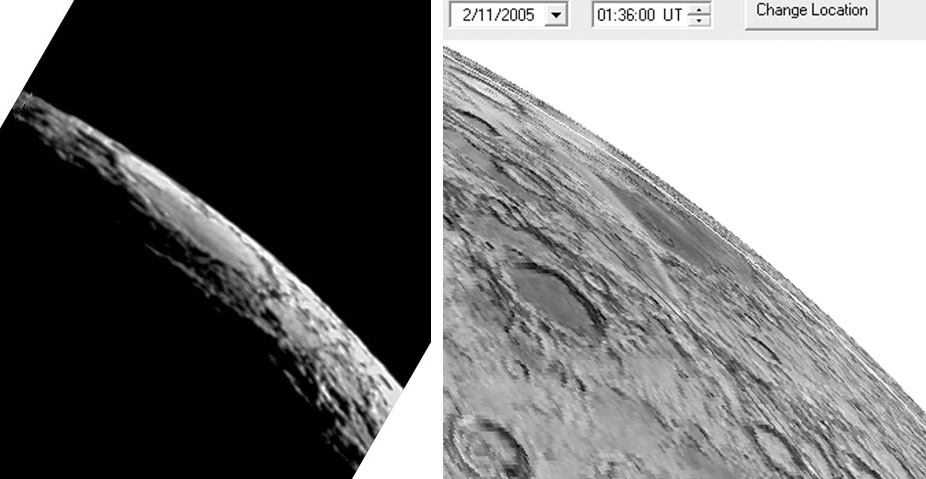
image by ["urrystars@comcast.net" Russ Urry] and map from LTVT
What is this feature? When Russ took it he thought it was Mare Humboldtiunum but then wondered if it really was Belkovich, just limbward of the mare. Identifing features at the limb is often difficult, especially when the Moon is just a slender crescent. In the last few months the Lunar Terminator Visualization Tool has helped resolve limbish confusions. The excerpt from the LTVT map for the exposure date and time shows that Russ’ first thought was right - the large smooth area is Mare Humboldtianum, but his second thought was also true - Belkovich is the bright spot at the top-right of Humboldtianum. I previously named the inner ring of Humboldtianum - which surrounds the mare - the Bishop Mountains (in the same position as the Rook in Orientale), and the outer ring - the diagonal ridge on the terminator - is the Andes (studied by Humboldt, the explorer scientist).
Related Links:
11 Feb 2005 @ 01:36 UT. 8″ F/10 SCT + Meade LPI Imager; stack of 50+ images
Related Links:
Rükl chart 7
Yesterday's LPOD: Peak Rings
Tomorrow's LPOD: Twins - Not!



